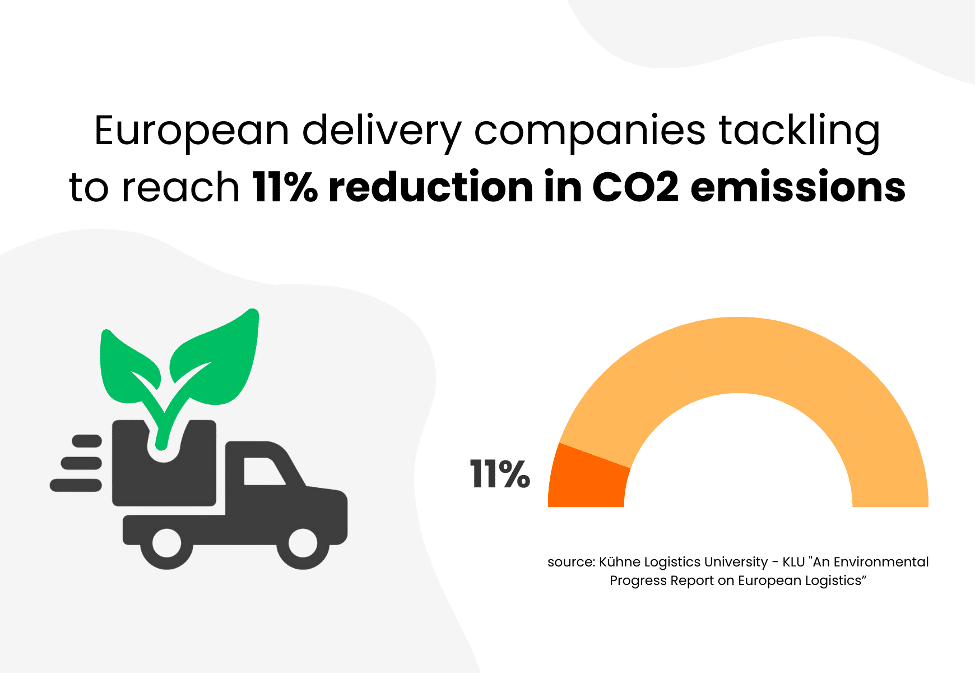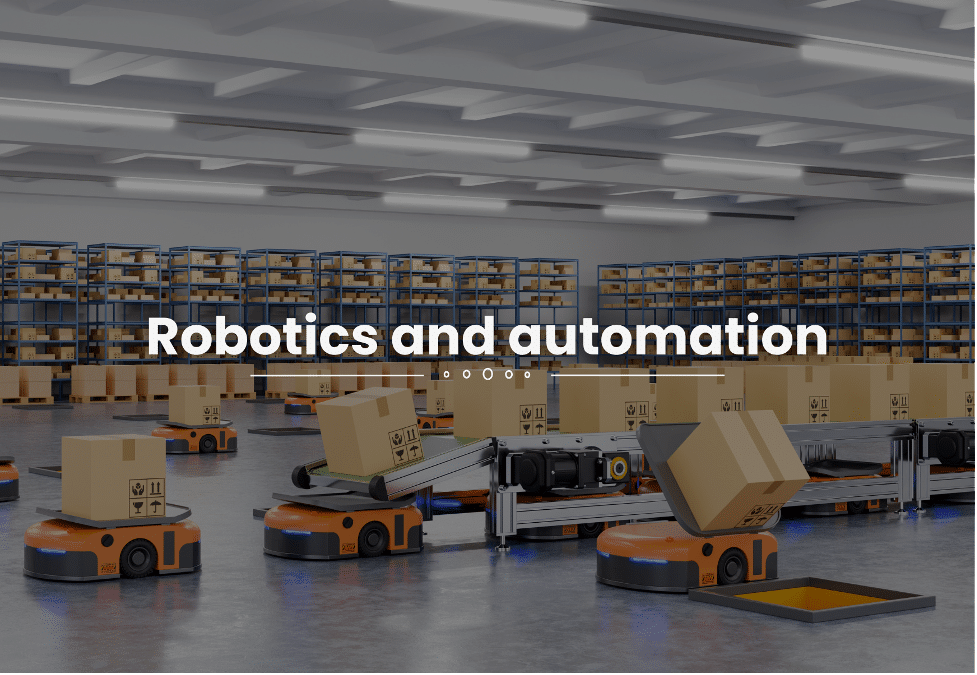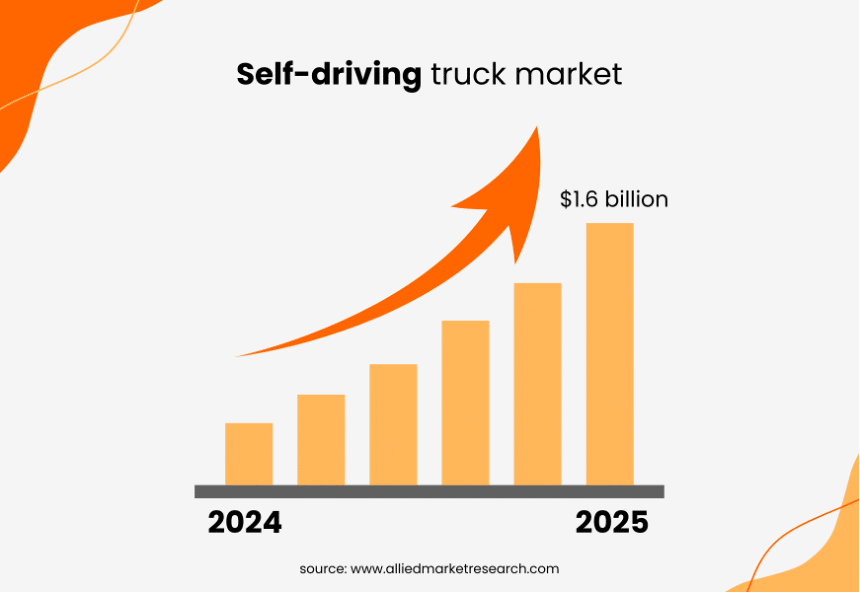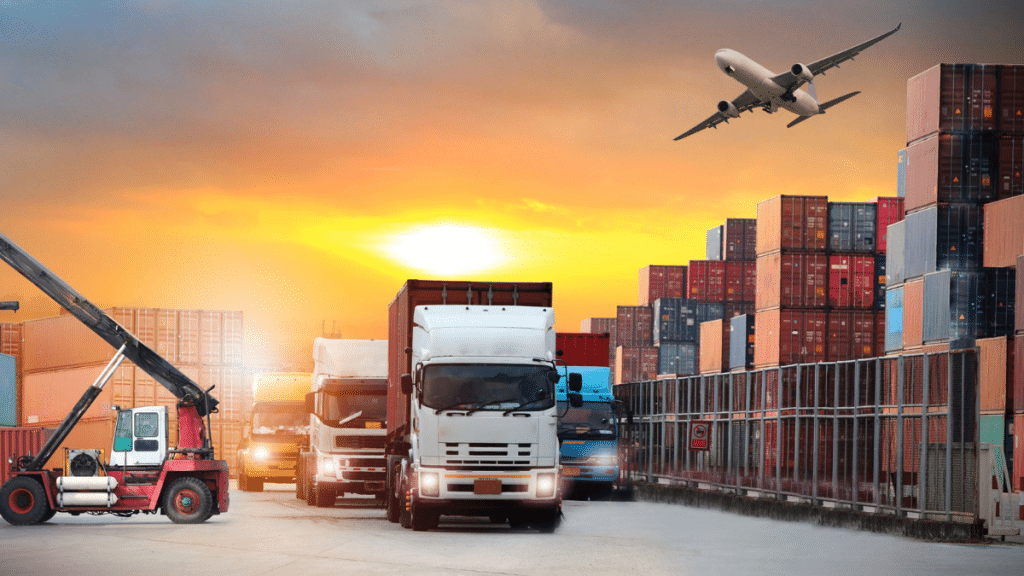The logistics industry is a fierce market that’s changing rapidly.
Not even logistics businesses can keep up with every single new thing – almost like delivering a package with an ever-changing destination. But, to stay ahead of the competition, carriers need to both follow the trends and learn to implement them.
“Staying trendy” is a combo of many things: adopting new technology, analyzing customer behavior, and building smarter supply chains. And, if you can make sense of logistics trends and implement the ones that will last more than a season, your revenue is likely to skyrocket and stay at a high level.
Stick around if you want to know the logistics industry trends for 2025 and beyond.
Let’s hit the road.
What changed in logistics over the past decade?
A decade ago, logistics was a whole different ball game. Warehouses relied on manpower to find, pack, and ship goods. Routes were mapped out based on driver know-how and convenience.
And what about tracking shipments? Let’s just say it wasn’t exactly seamless because drivers had to stay in touch with customers by phone. Not to mention international freight and shipping that used to be overloaded with paperwork and subject to human error and delays.
Today, everything you think you knew about logistics is flipped thanks to the adoption of new tech, AI, and automation. More and more often, human labor’s out and machines are handling tasks from A to Z.
Meanwhile, in the light of climate change, eco-friendly shipping and green logistics have become the new industry standard. And thanks to complex global logistics networks, international shipments work like clockwork in most cases.
15 logistics trends that will survive 2025
Let’s look at the 15 logistics trends of 2025 that are here to stay.
1. AI and ML
Artificial intelligence (AI) and machine learning (ML) are transforming logistics like any other industry.
These technologies zoom through heaps of data to predict demand and fulfill orders quickly. Research done by McKinsey found that those delivery businesses that used AI and ML reduced their supply chain errors by anywhere from 20% to 50%.
Picture this: smart algorithms build the fastest, most efficient routes in real time, slashing fuel use and speeding up deliveries. Plus, they can predict vehicle maintenance needs, nipping all technical issues in the budget to keep fleets running smoothly and reliably.
2. Blockchain
Blockchain technology is revolutionizing the logistics industry by amplifying transparency and security. According to one report, blockchain is forecasted to boost the global economy by $1.76 trillion by 2030.
With a digital ledger tracking every transaction, shipments can be shielded from the risks of fraud and subsequent delays.
3. Sustainability
Delivery companies are going green.
In an effort to achieve a 11% reduction in CO2 emissions produced from deliveries, European logistics companies are offering solutions like electric trucks, smart routing for fuel savings, and recyclable packaging.

Why electric trucks?
Because they don’t produce exhaust fumes or release any smoke, not to mention being a hit with eco-conscious customers willing to pay extra for green deliveries.
4. IoT in logistics
(IoT), short for the Internet of Things, is transforming deliveries with smart connections. The way this works is by allowing logistics companies to monitor and track the packages they dispatch, together with the vehicles and warehouses in real time.
One report says there will be 207 billion IoT devices by 2030 connected to a worldwide network of tools and appliances.
In the delivery industry, IoT means smart sensors tracking location, temperature, etc. At the end of the day, it’s all about ensuring the goods are transported safely and delivered on time.
As an example, a sensor on a heat-sentitive shipment can send an alert if the temperature is too high, therefore preventing spoilage.
5. Robotics and automation
Robots are becoming the new heroes of fulfillment centers.
This is because delivery companies want to cut major costs like labor. While giving managers the remote to control every process.
Millions of robots are entering the logistics workforce this year. Delivery companies are rapidly adopting this technology to ace repetitive jobs like sorting, picking and packing and, on top of all of that, do it much faster.
Let’s not forget that automated guided vehicles (AGVs) can move goods easily around warehouses. Allowing skilled labor to concentrate on other complex tasks that robots cannot perform.

6. Delivery drones
In remote areas where regular delivery services aren’t available, online shopping can still be an option with a little help from drones.
Drones can escape traffic jams and handle shipments smoothly, becoming the perfect tool for last-mile deliveries to busy and remote locations.
Also, drones can be a life-saving solution delivering medical supplies and other emergency items, and actually saving people’s lives in areas that are hard to access.
7. Advanced analytics
Advanced analytics are very important in logistics. It’s a valuable asset to delivery companies because analytics helps transform a lot of data into useful, actionable information.
If you think about it, advanced analytics help companies manage inventory and predict demand, and this is what makes the whole supply chain work, ultimately contributing to better customer experience.
8. Autonomous vehicles
By autonomous vehicles, we refer to self-driving trucks. These trucks can be on the road 24/7, helping logistics companies deliver packages at any time and without human error or breaks.
The autonomous truck market is expected to reach $1.6 billion by the end of this year.

Autonomous trucks also minimize the risk of accidents caused by the human factor. Which means increased safety on the roads.
However, there’s still time for these autonomous vehicles to become a regular thing in logistics operations. Only a few big companies are using this technology to the full extent.
9. 3D printing
3D printing, or additive manufacturing, allows companies to make parts and products on demand, reducing the need for large inventories.
The global 3D printing market is projected to expand from USD 27.52 billion in 2024 to USD 150.20 billion by 2032. This data suggests an annual growth rate (CAGR) of 23.6%. 3D printing can be a great solution for logistics companies that require the production of custom or complex parts quickly and affordably.
For example, a specific part needs to be repaired. With 3D printing, it can be made on-site, eliminating delays and reducing downtime.
In addition, 3D printing allows for greater production flexibility because it enables companies to respond more quickly to changes in demand. It also helps logistics providers streamline operations, lower delivery costs, and meet customer needs efficiently.
10. Same-day delivery
Online buyers want their packages delivered in the fastest way possible.
Logistics companies know this very well and should be focused on continuously improving their operations to meet customer expectations. This includes employing algorithms to anticipate demand, building warehouses closer to city centers, and using autonomous vehicles and drones among other things.
11. Cold chain innovations
Cold chain logistics is becoming more and more popular. It keeps heat-sensitive goods like food and medicines at a safe temperature. According to one source, the global cold chain market will reach $585 billion by 2026.
Special refrigeration units and sensors are used in cold chain logistics. These sensors provide real-time temperature updates from inside the cargo. This way, the temperature can be maintained at a safe level, keeping sensitive shipments like vaccines and medicines effective throughout the transportation process.
12. Flexible warehousing
Another prominent trend in logistics is flexible warehousing. It allows logistics companies to adjust their storage space based on the current needs.
This solution offers a dynamic approach to inventory logistics management. It works best for businesses experiencing seasonal changes in demand. On-demand warehousing means that business can scale up or down as needed – with no extra charges for customers.
13. Digital twins
Digital twins are virtual copies of physical assets or systems. They are advanced tools that can simulate different scenarios, predict issues, and optimize logistics operations. An interesting report by IoT Analytics claims that the digital twin market is expanding with a projected CAGR of 30% between 2023-2027.
In logistics, digital twins can copy the flow of goods within a warehouse. They can detect issues and test improvements in a virtual environment before making changes in the real world, which reduces both risks and costs.
Digital twins can provide valuable insights and truly help companies make better decisions and improve efficiency. Logistics businesses can reduce downtime and improve overall supply chain performance by using these virtual environments.
14. E-commerce growth
The e-commerce industry is also a fierce, growing market and because of this, online shopping has increased as well. It’s all about meeting customer demands. When it comes to online shopping, the demands dictate that companies need to know how to ship many small packages in a cost-effective and timely manner.
This means being faster and much more efficient than before, if you want to compete with autonomous delivery companies using robots and drones. Also, this is one of the reasons why many logistics companies are building automated centers to process orders quickly.
They also find new delivery methods, like contactless drop-offs and smart lockers. As more and more people shop online, quick and error-free delivery is very important to the bottom line of logistics companies.
15. Cybersecurity
Protecting customer data is a top priority for delivery businesses. Cybersecurity issues should not be underestimated or ignored; according to one report, by 2029, the global cybersecurity market is expected to reach $376 billion.
Logistics businesses must adopt cybersecurity methods to protect their customers’ personal data like transaction records. Businesses can use encryption and multi-factor authentication, making sure no hacker can access their systems.
Teaching employees how to identify and handle potential cyber threats also proves beneficial to delivery businesses. With more data than ever before being generated daily, adherence to cybersecurity will be the trend for years to come.
Wrapping up
As a business owner looking to future-proof their logistics operations, you should keep tabs on all of these trends. Watch out for the ones that dominate other industries besides logistics and be the first among your competitors to act and reap the benefits of innovation.
